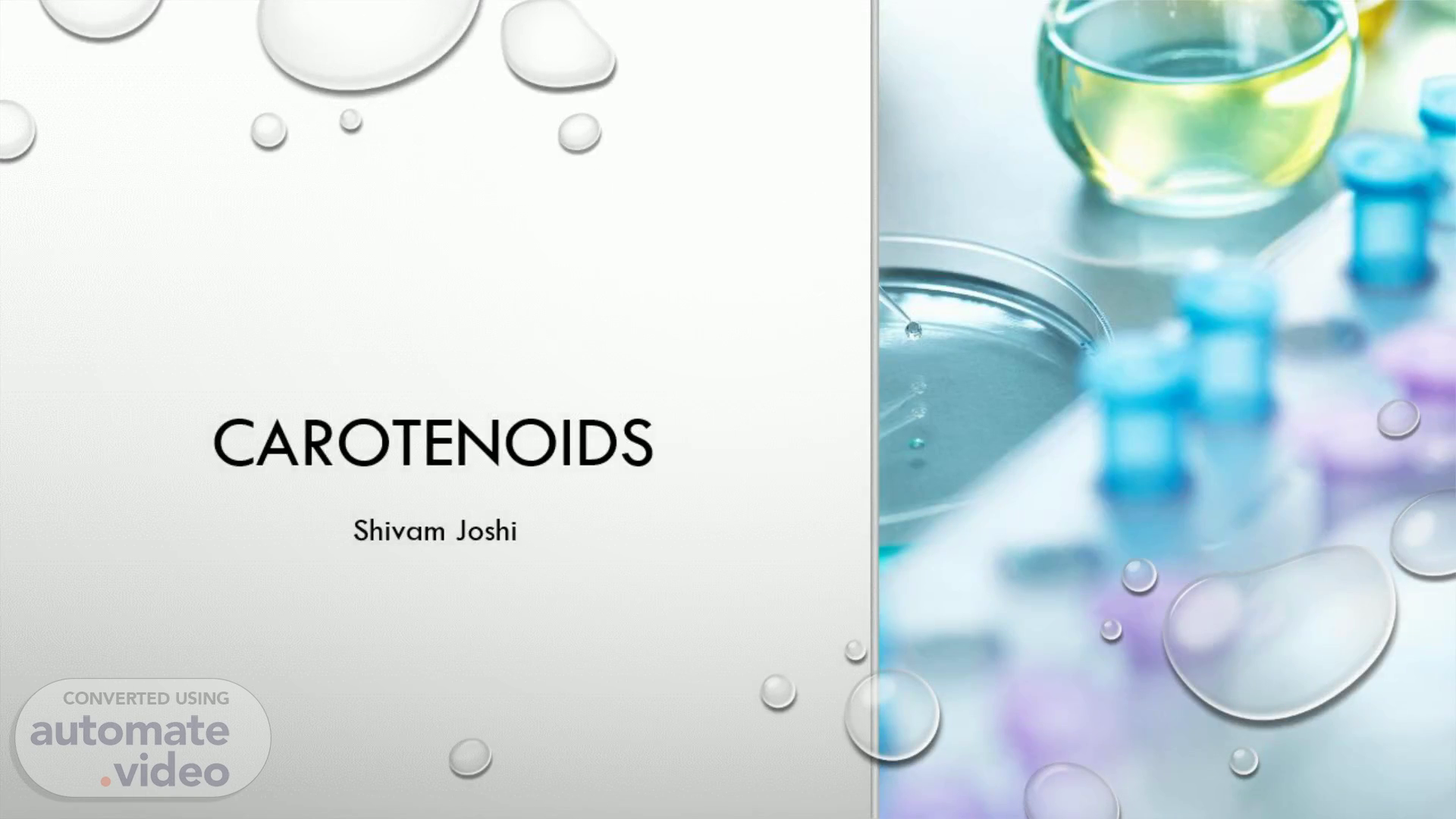Scene 1 (0s)
Petri Dish. carotenoids. Shivam Joshi.
Scene 2 (7s)
bioactive compound from Fruits and vegetables. A wide variety of fruits and vegetables provide a range of nutrients and different bioactive compounds including phytochemicals ( phenolics , flavonoids, and carotenoids), vitamins (vitamin C, folate, and provitamin A), minerals (potassium, calcium, and magnesium), and fibers. Fruits and vegetables are colourful , flavourful and nutritious components of our diets. Bioactive compounds such as polyphenols, carotenoids, vitamins, phytoestrogens, glucosinolates and anthocyanins present in fruits and vegetables are receiving increased attention because of their potential health benefits. Diets rich in fruits and vegetables may help to delay the ageing processes and reduce the risk of certain types of cancer, cardiovascular diseases and other chronic diseases. The combination of vitamins, minerals, phenolic antioxidants and fibre seems to be responsible for these effects..
Scene 3 (41s)
carotenoids. Carotenoids are hydrocarbon compound consisting of conjugated double bond system responsible for the red to pink colors found in seeds, fruits and vegetables. Carotenoids are classified into two groups based on the presence or absence of oxygen molecule in their basic structure. They are widely distributed in nature. Their synthesis are via geranylgeranyl pyrophosphate through phytoene, followed by dehydrogenation, desaturation, cyclization, hydroxylation, epoxidation and oxidation. The unique chemical structure of carotenoids has contributed to several of their specific pharmacological activities including anti-aging, anticancer, anti-diabetics, immune modulating, anti-obesity, antioxidants, pro-vitamin, osteo -protective, cardio-protective and hepatoprotective properties. Several health benefits of carotenoids have prompted their inclusion in food and drinks to serve as nutraceutics and nutritional supplements..
Scene 4 (1m 15s)
carotenoids. The word carotenoids was coined from the name carrot ( daucus carota ) and together with anthocyanins , they are the most compounded group of non-artificial food colorants and they are documented to have more 750 different structures Carotenoids are a class of orange, yellow and red-pigmented poly-isoprenoid hydrocarbons produced by prokaryotic cells, higher plants and concentrating in animal lipid.
Scene 5 (1m 33s)
Classification. Carotenoids are fat-soluble pigments with above 700 compounds, mostly containing more than 40 carbon and two terminal rings. Carotenoids are classified into two major groups. The first group includes carotene linear hydrocarbons with no oxygen molecule which tend to be cyclized at either ends of the compound. The second group comprises the oxygenated carotene derivatives. Carotenoids may also be classified as cyclic or acyclic depending on the presence or absence of cyclic chains at the terminals. They may similarly be classified as primary or secondary carotenoids. Primary carotenoids include compounds required for photosynthesis of plants, like β- carotene, violaxanthin , and neoxanthin while secondary carotenoids do not possess photosynthetic activities and are localized in plants fruits or flowers, which include antheraxanthin , capsanthin , capsorubin , zeaxanthin , α- carotene, and β- cryptoxanthin.
Scene 6 (2m 8s)
Pharmacological Activities of Carotenoids. Anti-aging Activity- The development and progression of atherosclerosis is regarded as one of the major manifestations of aging. It has been documented that the production of reactive oxygen species (ROS) by the inflammatory milieu of atherosclerotic plaque is one of the causes of atherosclerosis. The level of ROS in aging blood arteries leads to endothelial damage and dysfunction, and this stimulates the progression of atherosclerosis Osteo -protective Activity- Carotenoids like β- cryptoxanthin have the ability to regulate the health of bone and inhibit osteoporosis. The existence of β- cryptoxanthin at a concentration of 10−6 or 10−7 M leads to decrease in the activity of alkaline phosphatase and content of calcium in the femoral- metaphysial and femoral- diaphysial tissues in female rats.
